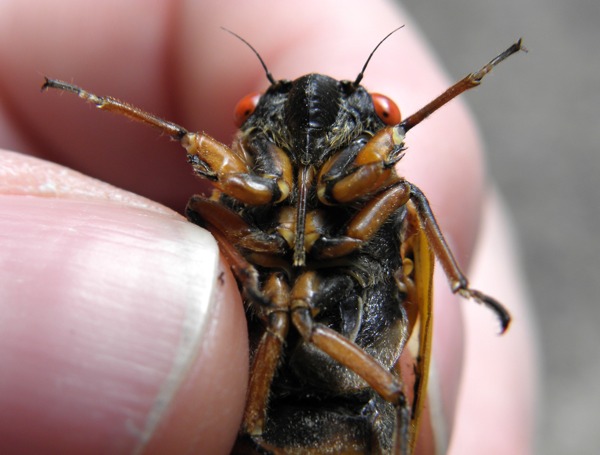If you’re a Brood I cicada, you’re probably instar 4.
10 years ago meme (which is a thing in January of 2022):
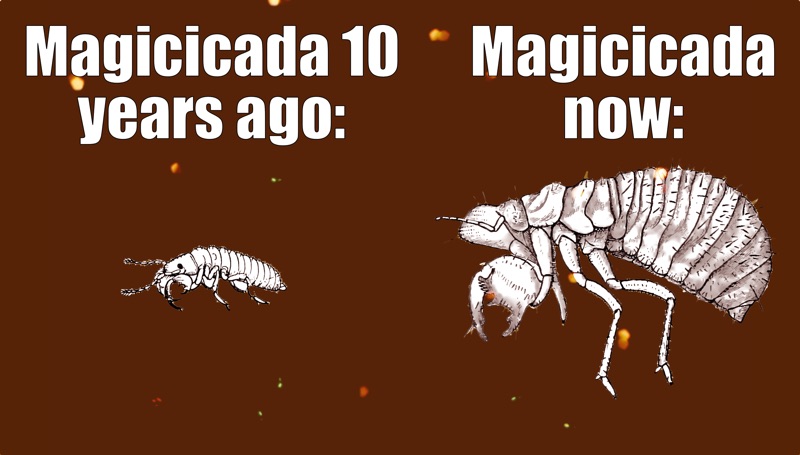
Dedicated to cicadas, the most amazing insects in the world.
If you’re a Brood I cicada, you’re probably instar 4.
10 years ago meme (which is a thing in January of 2022):

Magicicada skins (exuvia) blanket the ground around the roots of a tree. This is a photo of periodical cicada skins taken by John Cooley of Cicadas @ UCONN (formerly Magicicada.org) in Warriors’ Path State Park, TN, in 2012. Brood I.
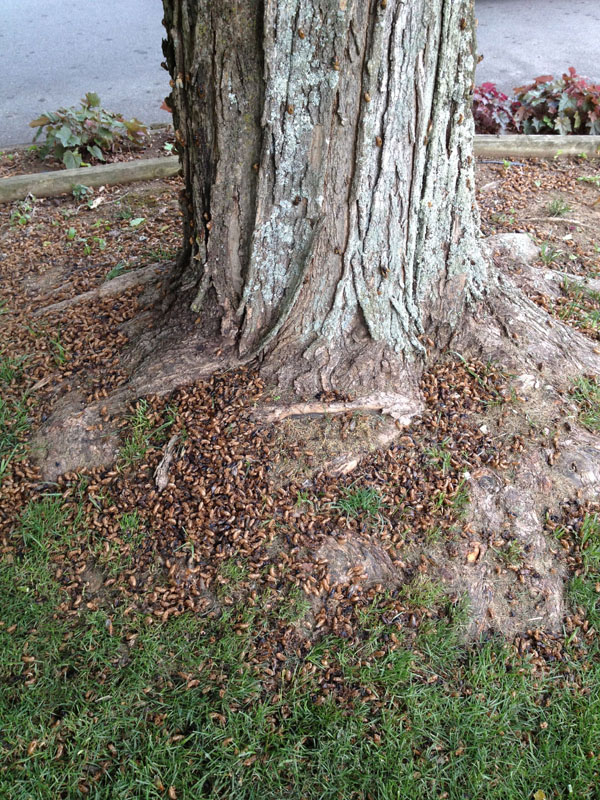
The next major emergences are Brood XIII (17-year) and Brood XIX (13-year) in 2024. The last time these broods co-emerged was 1803. April 11th: Magicicada cicadas have begun to emerge. Little by little and before you know it the full emergences will begin.
If you have 18 minutes to spare, watch the video version of this article. Or save 18 minutes and just read it:
These are the 17 most interesting 17-year cicada facts (IMHO). All these facts apply to 13-year cicadas as well. Brood IX will emerge in 2020 in North Carolina, Virginia and West Virginia. Report 17-year cicada sightings using the Cicada Safari app available for Android and Apple devices.
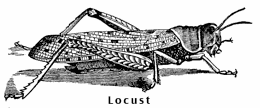
Here’s a video that will help you identify the various species.
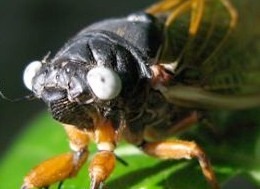
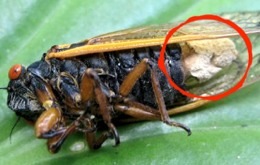

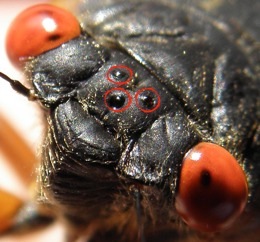

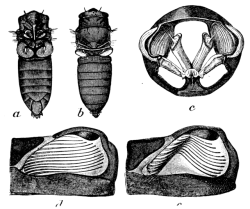
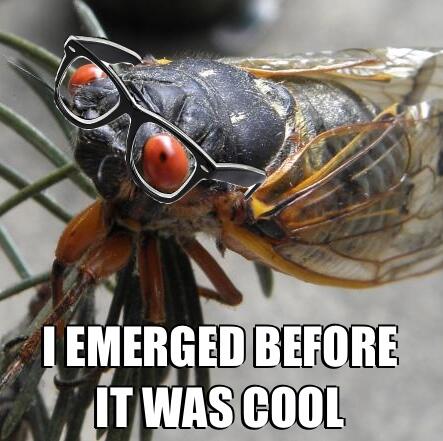
Bonus: More information on the morphology of 17 and 13 year cicadas, so you can tell the difference…
Another bonus:
What is the taxonomy of the Magicicada genus?
Kingdom: Animalia (animals)
Phylum: Arthropoda (arthropods)
Subphylum: Hexapoda (hexapods)
Class: Insecta (insects)
Subclass: Pterygota (winged insects)
Infraclass: Neoptera (wing-folding insects)
Order: Hemiptera Linnaeus, 1758 (true bugs)
Suborder: Auchenorrhyncha (hoppers)
Infraorder: Cicadomorpha
Superfamily: Cicadoidea
Family: Cicadidae Latreille, 1802 (cicadas)
Subfamily: Cicadettinae Buckton, 1889
Tribe: Taphurini Distant, 1905
Subtribe: Tryellina Moulds, 2005
Genus: Magicicada Davis, 1925
Brood I, a brood of 17-year Magicicada periodical cicadas, emerged in the spring of 2012 in western Virginia, a small part of eastern West Virginia, and (expected by some, unexpected by others) in the Tri-Cities area of Tennessee.
The emergence in Tennessee caught some (myself included) by surprise, because it is not on Brood I maps, but folks in the Tri-Cities area say they expected it. Brood I is known as the Blue Ridge Brood because it exists along the Blue Ridge Mountains. The Tri-Cities area of Tennessee falls within the Blue Ridge Mountains, so the nickname of the brood works for Tennessee as well. I’m sure that there will be debate as to whether the Tri-Cities cicadas belong in Brood 1; we’ll know for sure in 2029.
Brood I emerged earlier than expected due to unseasonably warm weather in Virginia. On April 23rd, Barbara Dekorsey reported the following on the Cicada Mania Facebook page: “My kids and I saw periodical cicadas emerging on Blue Ridge Parkway MP 114.9, at the Roanoke River Trailhead (Roanoke, VA). It was wet and cool, and many of them were dead or dying with poorly formed wings.” Unfortunately, the moment when many cicadas began to emerge, the weather switched, greeting cicadas with wet, windy, cold weather, which resulted in cicada deaths and deformities due to harsh weather. Plenty of cicadas emerged unscathed, though, so the brood will live on.
Brood I is a small, but interesting Brood.
More information:
John Cooley of Cicadas @ UCONN (formerly Magicicada.org) (don’t forget to report your sightings) wrote to tell us about the large emergence of periodical cicadas in Tennessee. See the picture below taken by John in Warriors’ Path State Park, TN.
The mystery is defining which brood these cicadas belong to. Are they brood XIV stragglers; are they an undocumented pocket of Brood I cicadas; or are they cicadas that straggled long ago, but finally established a healthy population in synch with Brood I? For now, it’s a puzzle.

See John’s map on Cicadas @ UCONN (formerly Magicicada.org) that documents the 2012 Tennessee cicadas.
Update: A similar emergence occurred in 1995 (17 years ago) in the Warriors’ Path State Park, TN area. This could be an undocumented area of Brood I cicadas.
When is a 2012 Magicicada not a Brood I cicada? When it’s a straggler.
A straggler is a periodical cicada that emerges in a year before or after the year they are supposed to emerge. Typically a straggler will emerge one or four years before, or one year after the year they should have emerged. Stragglers from Broods II (due 2013), Brood V (due 2016) and Brood XIX (backin 2011) are or will emerge this year in limited numbers.
Brood II is set to emerge next year in most of central Virginia (as well as CT, MD, NC, NJ, NY, PA), Brood V will emerge in four years in Virginia and West Virginia (as well as OH, PA), and Brood XIX emerged last year in a few areas of Virginia (as well as AL, AR, GA, IL, IN, KY, MO, MS, NC, OK, SC, TN).
Stragglers present a challenge for people tracking the Brood I emergence because Brood II, Brood V and Brood XIX stragglers will emerge in the same states as Brood I cicadas. Brood II and Brood V overlap Brood I in some places.
Here is a comparison of the I,II & V Broods. The black dots represent where the cicadas have emerged historically.
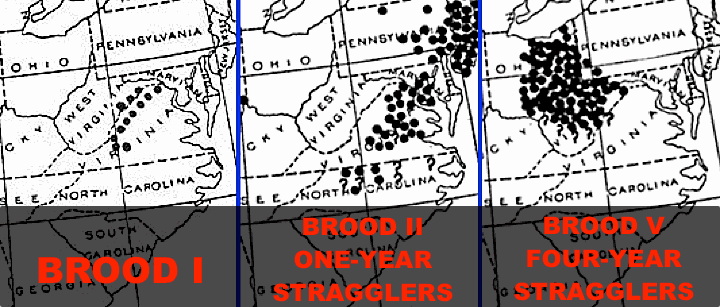
Here’s a map of Brood XIX in case you are curious:
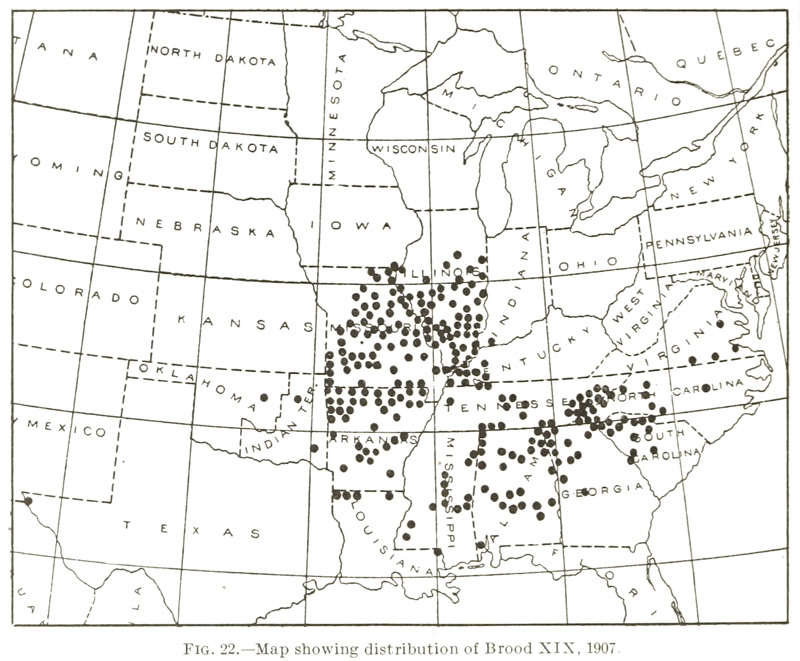
Visit Cicadas @ UCONN (formerly Magicicada.org) for more information on this phenomena, and report your cicada sightings while you’re there. Credit goes to the Cicadas @ UCONN (formerly Magicicada.org)’s Facebook post that reminded me of the stragglers.
Brood I will next emerge in 2029.
This page was last updated in 2012.
They are emerging now. Due to warmer than normal temperatures, Brood I cicadas have started to emerge sooner than expected. Typically, once the soil 8 inches (20cm) below the surface gets to 64 degrees Fahrenheit (18º C) they will emerge. Cicadas in sunny areas will emerge before cicadas in shady areas.
Historically, Brood I has emerged in counties along the border of the Virginias, including the counties: Augusta, Bath, Bedford, Botetourt, Grant, Page, Pendleton, Rockbridge, and Rockingham. Visit the Magicicada Database Query Page to search historical records, or Cicadas @ UCONN (formerly Magicicada.org) to see a live map of the emergence.
Important: Magicicadas won’t emerge everywhere in the counties mentioned above. They might not exist in your town or neighborhood (particularly if there’s lots of new construction, which removes trees). The key to seeing them if they don’t emerge in your neighborhood is communication: networking with friends and family, checking the interactive maps on magicicada.org, checking sites like Twitter, Facebook and YouTube.
Look out for cicada chimneys, turrets or holes the diameter of an adult’s finger near the root system of a tree. These are sure signs that cicadas will emerge in the area.
You might discover some cicada nymphs while turning over stones or when performing landscaping chores. They are a golden-brown color, with black coloration in the area behind their heads.
Here is a great video of Magicicada nymphs once they have emerged from the ground:
Magicicada cicada nymph mania from Cicada Mania on Vimeo.
Once cicadas nymphs have emerged from the ground, they will try to find a tree, and then begin the process of exiting their old nymph skins, drying their wings, and changing to their adult coloring. If you have the time, a flashlight and a camera you can record this amazing transformation.
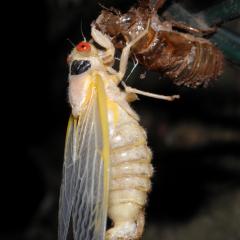
Magicicada is a genus of periodical cicadas known for emerging in massive numbers in 17 or 13 year cycles/periods. The cicadas emerging in 2012 have 17 year life-cycles. Magicicada are also organized into broods. There are 12 broods of 17 year cicadas, and the brood emerging in 2012 is Brood I (Brood One).
There are 3 species of 17-year Magicicada: M. septendecim (aka “decims”), M. cassini, and M. septendecula. The adults of all three species have black bodies with orange markings and red-orange eyes.
Perhaps the best way to visually distinguish the adults of the three species is by observing the coloration on their abdomens: M. septendecim have broad orange stripes with more orange than black; M. cassini has black abdomens with virtually no stripes at all, and M. septendecula has stripes that feature as much black as orange. Visit this Cicadas @ UCONN (formerly Magicicada.org) species page for detailed information, including photos and audio.
M. septendecim also have an area of orange coloring between the eye and the wing: 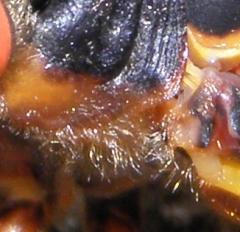
Another great what to tell their difference is to listen to their song.
Here is some video and audio of 17 year Magicicada. This will give you an idea of what to expect:
Cicada Mania, best of 2007, part 1 by Dan from Cicada Mania on Vimeo.
Note: some folks call these cicadas “locusts”, but they are not true locusts.
Why do Magicicadas wait 17 years and why do they emerge in such large numbers? There are many theories why, but the primary reason could be that they’re trying to beat the predators. Since they emerge only once every 17 years, no species can anticipate their emergence (except man), and emerging in large numbers ensures that at least some of them will survive to reproduce. See more about Cicadas and Prime Numbers.
People have many reactions to Magicicada including fear, disgust, panic, mild curiosity, fascination, and fanaticism. We hope that YOU will find them fascinating, and get involved by helping to map the emergence, upload your cicada photos and videos to sites like YouTube, Pinterest, and Flickr, and participate in discussions on Twitter and discussion forums like Reddit.
More information:
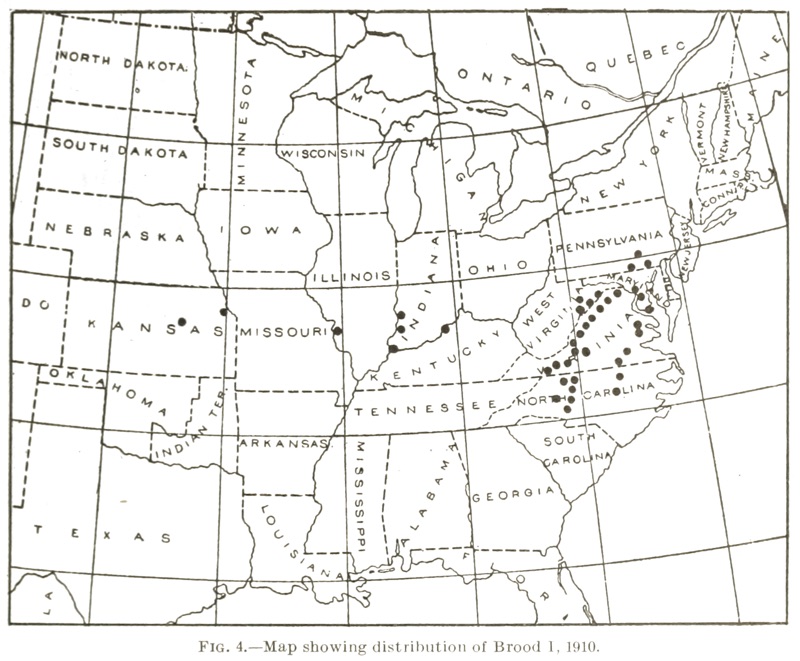
The Brood I Cicada emergence has begun early, as predicted, due to the warm weather in recent weeks. The first Brood I cicadas were spotted in Roanoke, Virginia. See our Cicada Mania Facebook Page for a photo and the person who found them. Unfortunately, the cold weather seems to have hurt the early emerging cicadas.
First we had unnaturally warm weather, causing the cicadas to emerge early, and right when they start to emerge: cold, wet weather. This is bittersweet news.
BTW,
Here’s a list of counties where they should emerge:
Augusta
Bath
Bedford
Botetourt
Grant
Page
Pendleton
Rockbridge
Rockingham
Update (4/23): The first Brood I emergence (that we heard of) occurred in Roanoke, Virginia. Unfortunately, the sudden cold, wet weather seems to have hurt the early emerging cicadas.
The rest of this post was originally from March 11th, 2012:
Next week temperatures are forecasted to reach 79°F in the parts of Virginia, where Brood I Magicicadas are expected to emerge this year. That’s hot for March, but is it hot enough for the cicadas? Periodical cicadas typically emerge when the soil 8″ below the surface reaches 64°F. Although temperatures will be in the 70’s all week, that might not be enough to heat the soil to the necessary temperature, but stranger things have happened.
Last year Brood XIX Magicicada started emerging in Abbeville County, South Carolina after only 3 days of temperatures in the 70s.
My guess is temperatures won’t heat the soil enough to launch a full-blown emergence, but a few cicadas will emerge in the warmest and sunniest areas. Keep on the look out. Take photos and video. Report sightings to magicicada.org. Check the Magiciciada database for locations; places like Rockbridge, Page, Botetourt, and Bath counties…
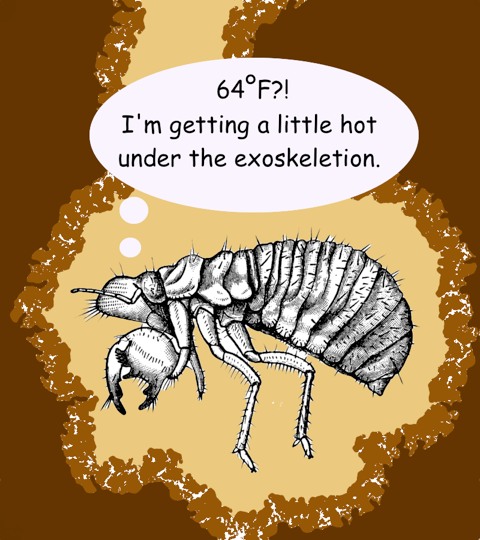
The Magicicada periodical cicadas belonging to Brood I (one) will emerge in western Virginia and eastern West Virginia in the spring of 2012. Brood I cicadas have a 17-year life cycle. Three species of periodical cicada will emerge: Magicicada cassini, Magicicada septendecim, and Magicicada septendecula.
Brood I is also called the Blue Ridge brood because the emergence occurs in the Blue Ridge Highlands area. Brood I has historically emerged along RT 81 in Virginia, parts of George Washington National Forest, Jefferson National Forest, and around the Spruce Knob-Seneca Rocks National Recreation Area in West Virginia. Visit the Brood I page on Magiciada.org for more information and maps.
Get ready…
